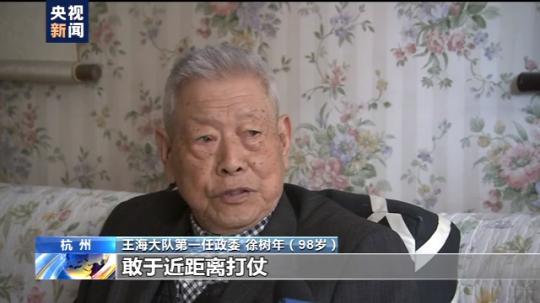Bayonet in the air!
He drove the MiG-15 into the US F-84 fighter group and shot down 5 enemy aircraft in one fell swoop
On the Korean battlefield, the US military used its air superiority to block and strangle our side.
The young Volunteer Air Force bravely challenged, and many battle heroes emerged.
Today we will tell the story of Wang Hai and his flying brigade fighting bayonet in the air.
The nine red five-stars on the Soviet-made MiG-15 fighter displayed at the Military Museum represent Wang Hai’s brilliant record of shooting down and wounding nine enemy aircraft on the Korean battlefield.
In October 1951, Wang Hai led a team to the frontline of the war.
At that time, the Chinese Air Force was only established for more than a year, with fewer than 200 aircraft participating in the war, and the average flying time of pilots was only a few dozen hours. Most of the US military pilots were air veterans with more than 3,000 hours of flying and experience in World War II.
Wang Hai (Interview before his death): I said that the sky is so big, the Americans are also a person, and we Chinese are also a person, I don't believe we can't beat you.
My flying time is less or less, this is my weakness, but I dare to fight, I dare to fight with you, this we have the upper hand.
Wang Hai and his comrades played while learning, against the US military ace flying team.
On November 18, 1951, more than 60 US F-84 aircraft bombed the Qingchuan River Bridge, and Wang Hai led 6 MiG-15 aircraft to respond.
He led the team to dive directly from an altitude of 6000 meters to 1500 meters, lifted, dived, lifted, and then dived. The formation of the enemy plane was completely disrupted and panicked.
In just ten minutes, they shot down 5 enemy planes, without any casualties.
Xu Shunian (98 years old), the first political commissar of the Wang Hai Brigade: The main reason why we were able to win was the spirit of fighting bayonet in the air and daring to fight close quarters.
As Wang Hai said, our heads are in the waistband.
The Chinese Air Force used bloodiness and fearlessness to break the US air superiority. The 16,800 square kilometers of airspace between the Yalu River and the Qingchuan River was later called the "MiG Corridor" by the US military.
The flying group led by Wang Hai fought fiercely with the enemy more than 80 times, shooting down and wounding 29 enemy planes, earning first-class collective achievement.
He himself was awarded the title of "First Class Hero".
In 1984, Wang Hai, then the deputy commander of the Air Force, encountered an old opponent on the battlefield when he visited the United States.
Wang Hai's daughter Wang Xiaohua: Gabriel was the Chief of Staff of the US Air Force at the time. By the way, are you the same Wang Hai at the time?
My father said yes.
He said I was shot down by you.
Later, my father told him that if you come to attack us again, we will beat you down!
After retiring, Wang Hai has always been concerned about the development of the Air Force. He often urges young people: Although the world is safe, if you forget the battle, you will be in danger. The once prestigious "Wang Hai Brigade" is now equipped with advanced fighters. They are defending the blue sky of the motherland with the confidence and spirit of "use me in the first battle, and use me to win."

